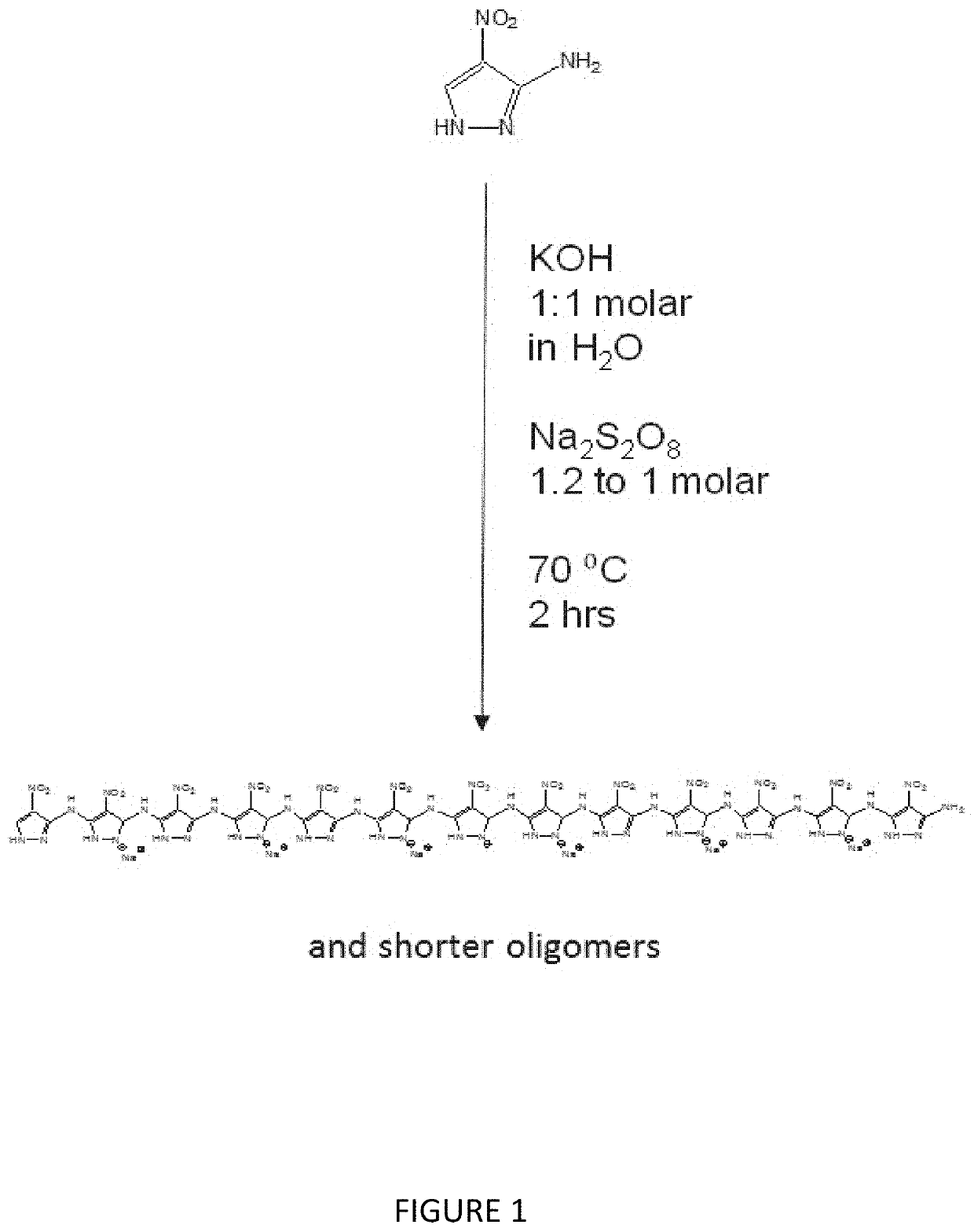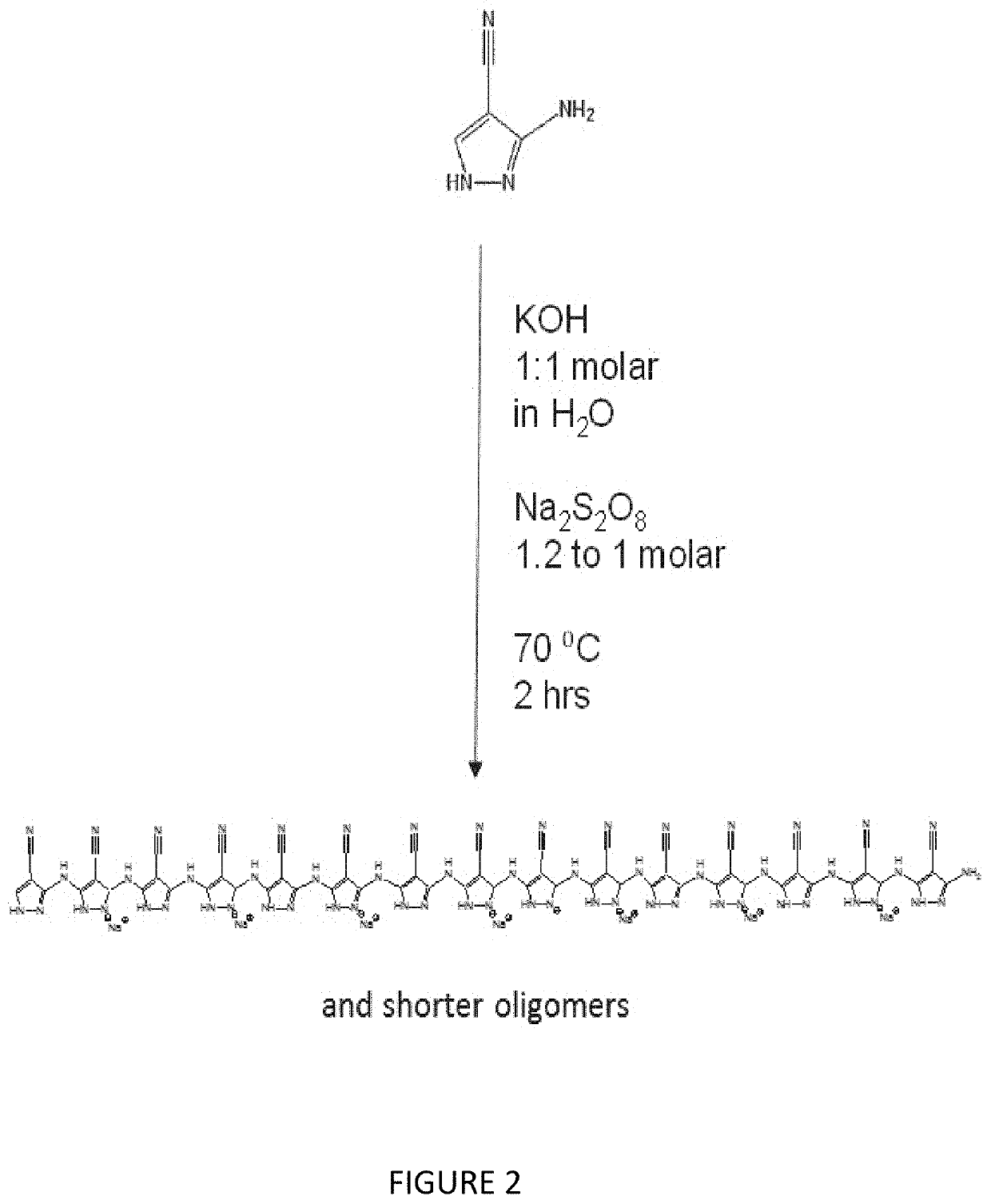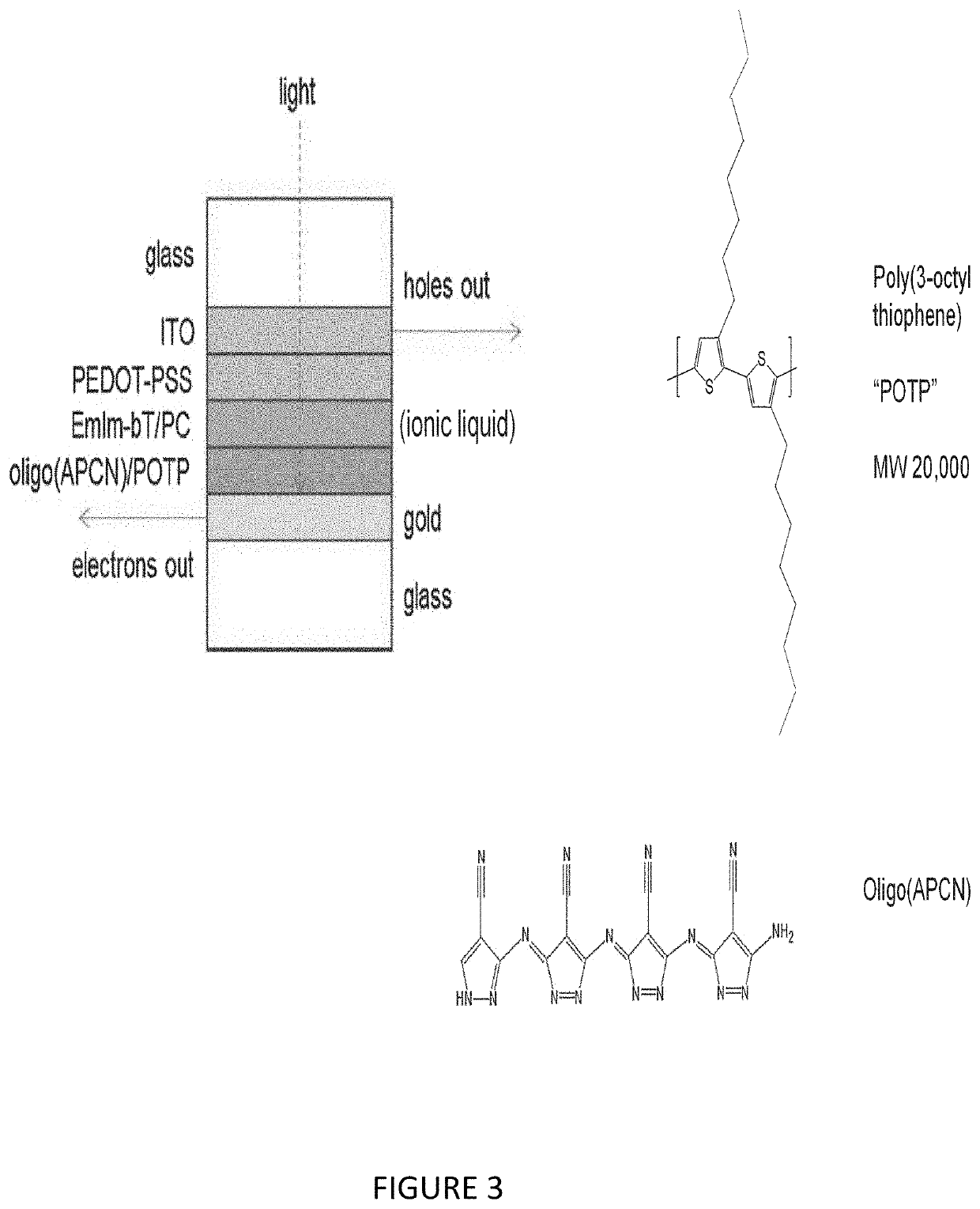Electrically Conducting Poly(pyrazoles)
a technology of electric conductivity and polymer, applied in the direction of conductive materials, conductors, organic chemistry, etc., can solve the problems of high cost of polymer use, less cost, and high manufacturing cos
- Summary
- Abstract
- Description
- Claims
- Application Information
AI Technical Summary
Benefits of technology
Problems solved by technology
Method used
Image
Examples
example 1
[0058]When illuminated with a sun-simulating lamp, solar cells constructed using the Invented polymers produce a photocurrent up to 5.1 times higher than similar cells made using commercially available polymers.
[0059]As a result, the responsivity (in Amps / Watt) of the cells constructed using the Invented polymers is from 2.9 to 70-fold higher than the latter.
[0060]Schemes 1 and 2 illustrated in FIGS. 1 and 2 depict the single step synthesis used to form poly(3-amino-4-nitropyrazole) “Poly(ANP)” and poly(3-aminopyrazole-4-carbonitrile) “Poly(APCN)”.
example 2
[0061]For Poly(ANP) synthesis, 90 mL DI water is added to a 250 mL Erlenmeyer flask then 2000 mg potassium hydroxide is dissolved while stirring at room temperature (RT).
[0062]Next, 4.72 g 4-nitro 3-aminopyrazole is added and allowed to dissolve at 70° C. (heating in a mineral oil bath).
[0063]As for the Poly(APCN), this allows a 1:1 molar complex to form between potassium and the deprotonated nitrogen of the pyrazole ring.
[0064]Over the next 1 hour, with the flask kept at 70° C., sodium (or potassium) persulfate was gradually added to give a final molar ratio of 1.2 moles persulfate to 1.0 moles 4-nitro-3-aminopyrazole.
[0065]In the case of the sodium persulfate, the amount added was 10.8 grams.
[0066]The reaction was allowed to proceed for an additional 2 hours at 70° C.-75° C.
[0067]During this time, most of the product precipitated, and was collected.
[0068]The flask was then removed and allowed to cool overnight at 4° C.
[0069]During this time, an additional portion of the product pr...
example 3
[0072]For Poly(APCN), in a typical procedure 90 mL DI water is added to a 250 mL Erlenmeyer flask, then 2.0 g potassium hydroxide is dissolved while stirring at RT.
[0073]Next, 4.0 g 3-aminopyrazole-4-carbonitrile is added and allowed to dissolve at 70° C. (heating in a mineral oil bath).
[0074]This allows a 1:1 molar complex to form between potassium and the deprotonated nitrogen of the pyrazole ring.
[0075]Over the next 1 hour, with the flask kept at 70° C., sodium (or potassium) persulfate is gradually added to give a final molar ratio of 1.2 moles persulfate to 1.0 moles 3-aminopyrazole-4-carbonitrile.
[0076]In the case of the sodium persulfate, the amount added was 10.8 grams.
[0077]The reaction is allowed to proceed for an additional 2 hours at 70° C.-75° C.
[0078]The flask is then removed and allowed to cool at −20° C. overnight.
[0079]During this time, the major portion of the product will precipitate, and can be collected. It was dark purple in color, in contrast to the dark red o...
PUM
| Property | Measurement | Unit |
|---|---|---|
| temperature | aaaaa | aaaaa |
| current | aaaaa | aaaaa |
| resistance | aaaaa | aaaaa |
Abstract
Description
Claims
Application Information
 Login to View More
Login to View More - R&D
- Intellectual Property
- Life Sciences
- Materials
- Tech Scout
- Unparalleled Data Quality
- Higher Quality Content
- 60% Fewer Hallucinations
Browse by: Latest US Patents, China's latest patents, Technical Efficacy Thesaurus, Application Domain, Technology Topic, Popular Technical Reports.
© 2025 PatSnap. All rights reserved.Legal|Privacy policy|Modern Slavery Act Transparency Statement|Sitemap|About US| Contact US: help@patsnap.com



